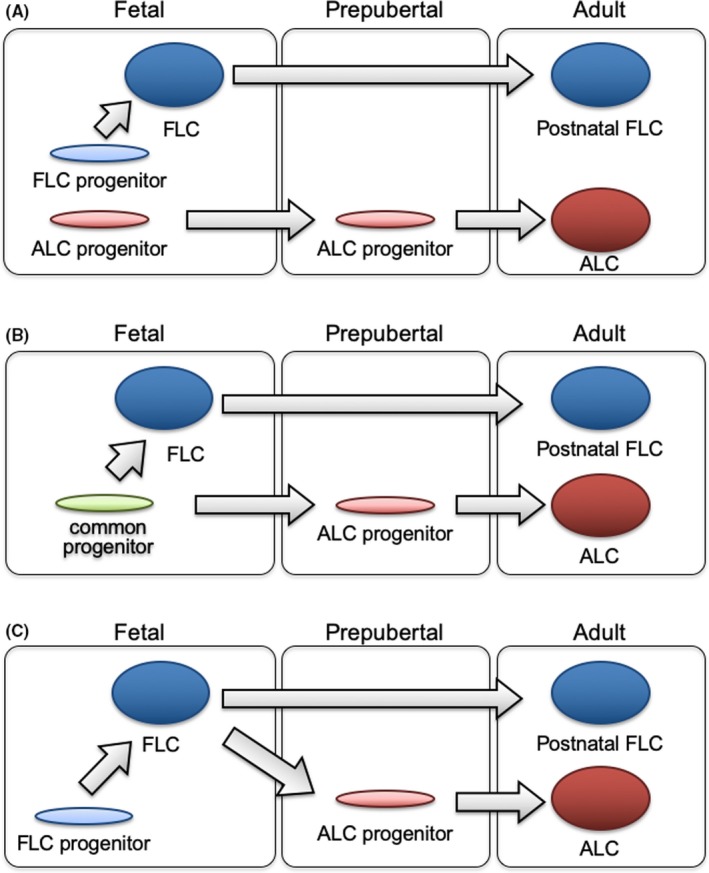Figure 2.

Proposed models of Leydig cell development. Three distinct models of Leydig cell development have been proposed. A, FLCs differentiate from FLC progenitors in the fetal testis. In contrast, there is another progenitor population (ALC progenitors) that starts to differentiate into ALCs at the prepubertal stage. Recent studies confirmed that FLCs do not disappear but persist in the postnatal testis (postnatal FLCs). B, There is a common Leydig cell progenitor pool in the fetal testis, and this population gives rise to both FLCs and ALCs, although it is still unclear how each progenitor is destined to become FLCs or ALCs. C, FLCs originate from FLC progenitors in the fetal testis. FLCs then dedifferentiate at the fetal to neonatal stages, and these dedifferentiated cells start to redifferentiate at the prepubertal stage, and contribute to ALC formation in the adult testis
